I am so excited to introduce to you our Animals in Winter Unit: What is Hibernation?
It is one of three studies we will be learning about.
Take a look at all of our hibernating animals pictures, which animals hibernate and the definition of hibernation, among other interesting facts.
We will answer questions like: What animals hibernate in the Winter? How do animals survive in the Winter?
Why do animals hibernate during the Winter? and more!

What is Hibernation?
There are some animals that are cold blooded and others are warm blooded.
During the winter, some animals adapt to changes in their environment by hibernating.
Hibernating is a long extended semi-sleep that is necessary for the survival of the animal when food is scarce during the cold season.
They spend the winter where they live, but they are not out and about in the cold to preserve their energy.
Animals living in cold climates are more likely to hibernate, although that isn’t the case for all cold-weather animals (polar bears, for example, don’t hibernate).

During hibernation, an animal goes into a prolonged sleep state, almost like a coma.
The animal’s heart rate slows, and its temperature drops, allowing the animal to use energy than normal.
The prolonged sleep conserves energy through the coldest part of the year.
Most animals that hibernate spend the fall gorging on food getting nice and fat.
During the winter, the animal lives on this fat reserve until the weather warms and the animal can find food once more.

Hibernation Books
Here are some great books on hibernation!
Make this a great mini unit as a part of your yearly seasonal preschool themes!
How and Why Animals Prepare for Winter (How and Why Series) Animals in Winter (Let’s-Read-and-Find-Out Science)
Animals in Winter (Let’s-Read-and-Find-Out Science) Hibernation (Patterns in Nature series)
Hibernation (Patterns in Nature series) Scholastic Reader Level 2: Hibernation
Scholastic Reader Level 2: Hibernation What Is Hibernation? (Science of Living Things)
What Is Hibernation? (Science of Living Things) Bear Snores On (The Bear Books)
Bear Snores On (The Bear Books)
&
Animals that Hibernate Facts
- We often think of bears as the only animals who hibernate, but in reality, tons of animals hibernate. Even some species of fish have periods of hibernation.
- Hibernating animals have a special kind of fat called “brown fat,” which is unlike other forms of fat. Most brown fat is stored in the backs of the animals and their stomachs.
- Hibernating animals reduce their metabolism to as little as 2 percent of their former energy use.
- Hibernating animals can drop their body temperature to as low as 27 degrees (that’s below freezing!)
- Some animals have one long hibernating sleep, while others sleep for several weeks and have periods of activity between naps.
- Hibernating lizards can drop their heart rate to as low as 1 beat per minute (their regular heart rate is 30 beats a minute).
- Some bear species will pack on 30 pounds of fat per day to prepare for hibernation.

Names of Animals that Hibernate
If you’re wondering which animals hibernate during winter, you’ll find a list of the most common hibernating animals below:
- Wood frogs
- Deer mice
- Bears
- Ground squirrels
- Skunks
- Prairie dogs
- Hamsters
- Bats
- Hedgehogs
There is a longer list of animals (and insects) that hibernate.
In our post, 23 Printable Pictures of Animals that Hibernate you will see a list of 23 animals that hibernate that will enrich your studies.
For over to the post to go get your free printables that you could use as a matching game!

Animals use Winter hibernation as an adaptation to survive when extra food is scarce.
Some animals store food, but others lose their food source.
This adaptation keeps the animal alive in a reduced-energy state until warm weather returns.
When the animal wakes, it is typically starving, which can be dangerous for humans.
If a human approaches a hibernating animal and wakes it, the animal will likely attack, particularly if it is a predatory animal such as a bear.

Animals in Winter Activities & Resources
Did you know that insects also hibernate in Winter months? They do!
Above, you can see where insects can hibernate to find a good spot to find food, get cozy and rest up for a time.
Here are some great resources on hibernation, migration and adaptation!
-
Sale!
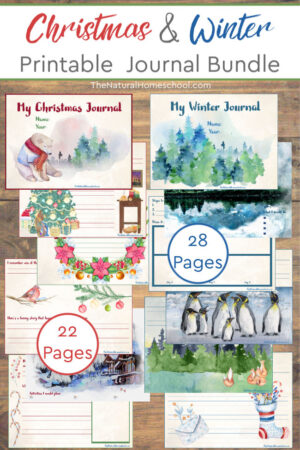
Christmas & Winter Printable Journal Bundle
$39.99$14.99 Add to cartQuick Buy- Sale!

Winter Printable Coloring Pages for Kids ~ 8-Set Bundle
$8.00$4.99 Add to cart- Sale!
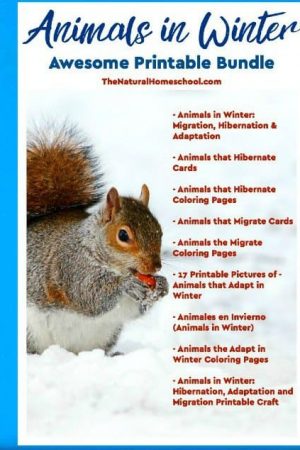
Animals in Winter – Printable Bundle eBook #1
$15.00$7.50 Add to cart- Sale!
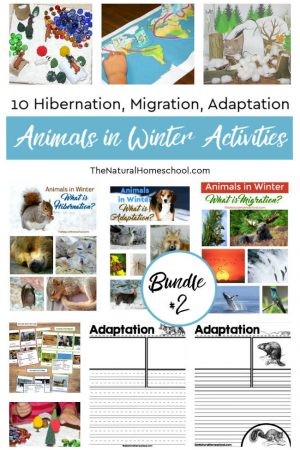
Animals in Winter Bundle #2 (Hibernation, Migration, Adaptation)
$10.00$7.99 Add to cart- Sale!
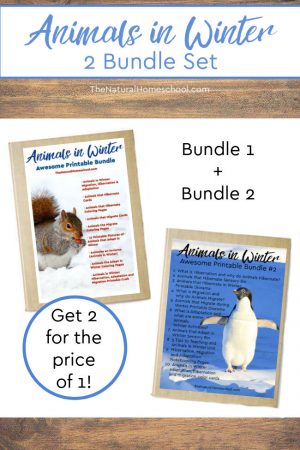
Animals in Winter Bundles #1 & #2 (Hibernation, Migration, Adaptation)
$20.00$9.99 Add to cart- Sale!
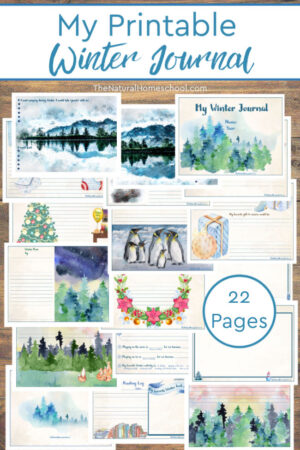
My Printable Winter Journal
$19.99$9.99 Add to cartOver and Under the Snow
 Anself Wood Butterfly House Natural Hibernation Boxes, Set of 4
Anself Wood Butterfly House Natural Hibernation Boxes, Set of 4 The Animals’ Winter Sleep
The Animals’ Winter Sleep
&

Thank you for visiting our Animals in Winter Unit: What is Hibernation? post!
You might like:
Take a look at other posts about animals that migrate, hibernate and adapt. There are some wonderful printables that are free for you on this blog!
Animals in Winter: Migration, Hibernation & Adaptation {Free Printable}

Animals in Winter Unit: What is Hibernation?

23 Printable Pictures of Animals that Hibernate

Animals that Hibernate in Winter Printable Coloring Book

Animal Migration in Winter ~ What is Migration?

Make a Creative Winter Scene Diorama {Printable}

Investigating Animals & Their Habitats

Montessori Zoology: Animals of North America (Free Printables)

____________________________________________________________________________________________ ____________________________________________________________________________________________
____________________________________________________________________________________________ ____________________________________________________________________________________________ Sale!
Sale!
Work with Me! Personalized Coaching Sessions (Montessori & Homeschool)
$75.00$50.00Do you need homeschool or Montessori at home coaching?
We customize a package that will help YOU the most, but this is our most popular package:
Take advantage of my 15 years of experience in the Montessori philosophy and 10 years of homeschooling.
1 A 30-minute video (or phone) call via Zoom for a 100% personalized “in-person” coaching
It will be recorded and the link will be sent via email within 24 hours for further review.
Once you purchase the coaching session HERE, I will contact you to set up a time that works for both of us.
2 An email prior to coaching call detailing what questions, concerns, issues need to be addressed.
This helps with maximizing face-to-face time for actual practical implementation tips.
3 Any prior recommendations from my online shop (ebooks, etc,) are included
4 A follow-up email within 24 hours of the video call, detailing what was discussed, steps to take, any additional recommendations from my online shop (again, also included in the package).
5 A second follow-up email/contact 1-2 weeks after the video coaching call to see how client is progressing and to see if another video call needs to be scheduled
- Sale!








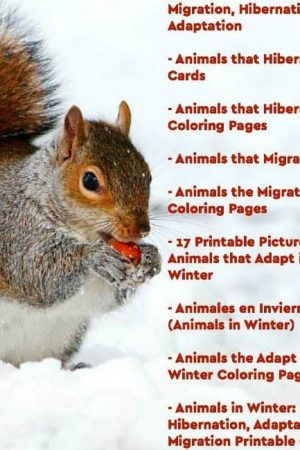
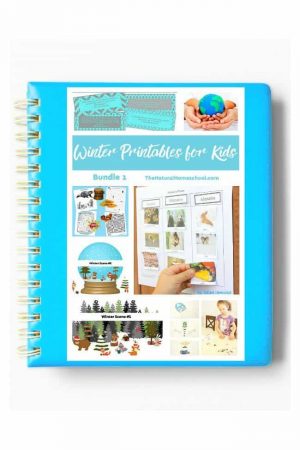









Karmen Hlad says
This is a great thing! Thanks for the hard work and selflessness!
Many greetings from Croatia